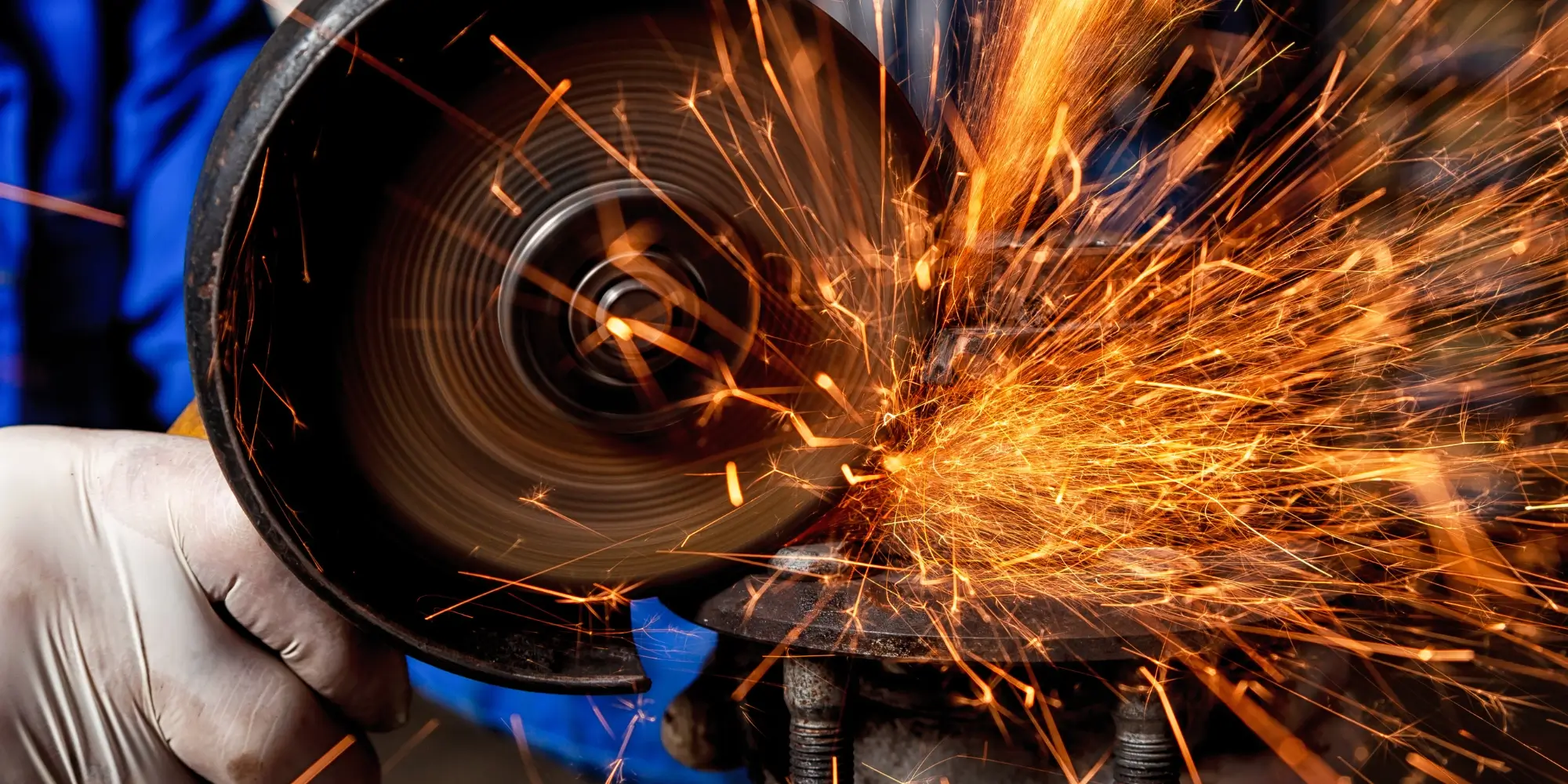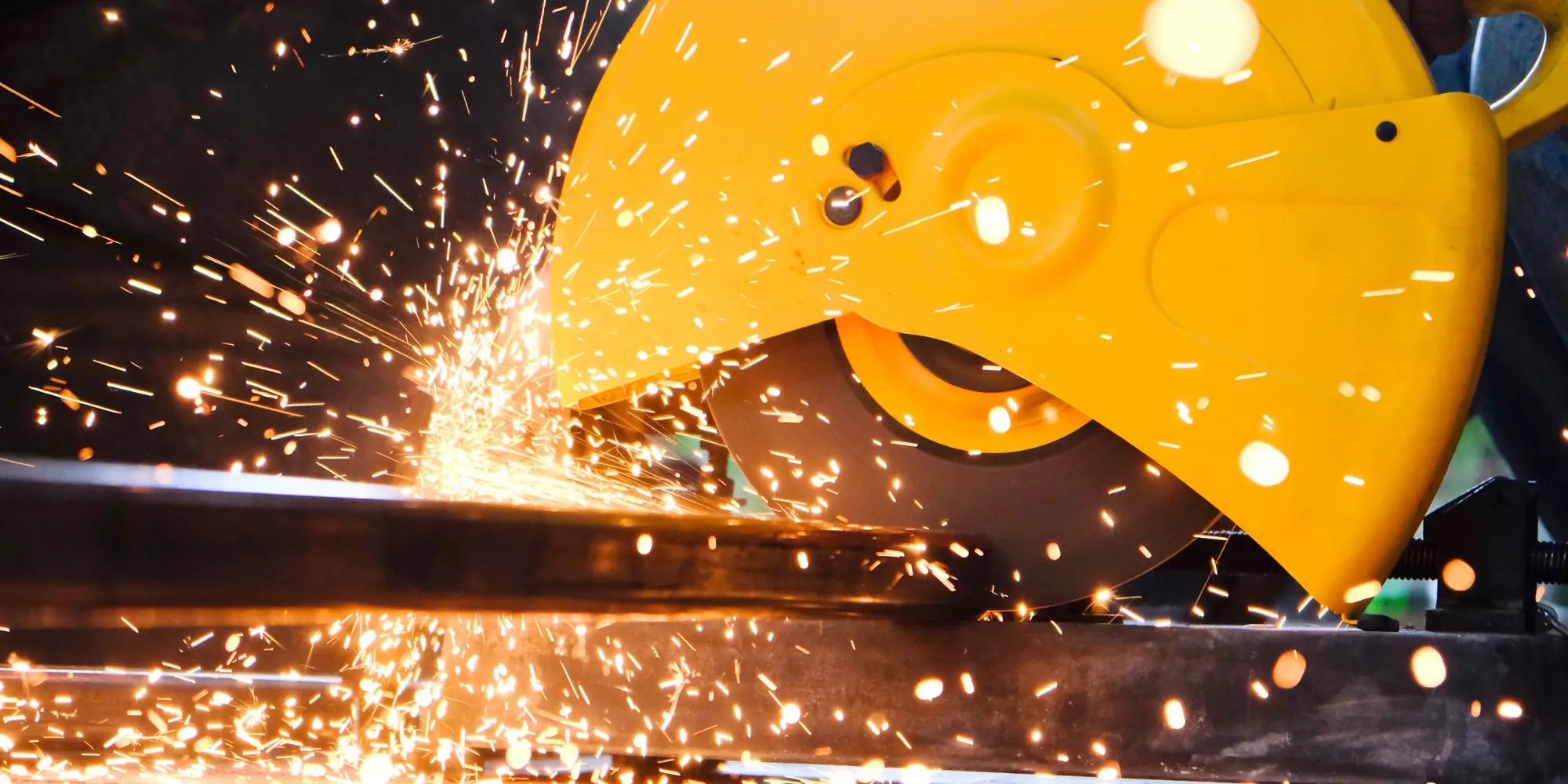Metalworking is a fundamental industry that shapes the world around us, from the cars we drive to the buildings we inhabit. Whether you’re a seasoned professional or a beginner, understanding what metalworking entails, recognizing its inherent hazards, and adhering to essential safety rules is crucial for a safe and productive workspace.
This comprehensive guide delves into the definition of metalworking, explores common associated hazards, and outlines ten indispensable safety rules to ensure your well-being while working with metals.

What is Metalworking? Definition
Metalworking is the process of shaping, cutting, and manipulating metal into desired forms using various techniques and machinery. It encompasses various activities, including cutting, welding, forging, casting, and finishing. Metalworking transforms raw metal materials into functional and decorative objects, machinery parts, tools, and structures essential for various industries such as construction, automotive, aerospace, and manufacturing.
History of Metalworking
Metalworking has been integral to human civilization for thousands of years. The earliest evidence dates back to around 8,700 BCE when copper tools and ornaments were created. Over centuries, metalworking techniques evolved, leading to the development of bronze and iron tools during the Bronze and Iron Ages.
The Industrial Revolution marked a significant advancement in metalworking. Steam-powered machinery enabled mass production and precision engineering. Metalworking uses advanced technologies like Computer-Aided Design (CAD) and Computer Numerical Control (CNC) machines to produce intricate and precise metal components.
Metalworking Techniques
Metalworking techniques vary based on the properties of the metal and the desired outcome. Common methods include:
- Cutting: Involves removing material from metal pieces using tools like lathes, milling machines, and plasma cutters.
- Joining: Combines metal pieces through welding, soldering, or riveting.
- Forming: Shapes metal using heat and pressure, such as forging, bending, and rolling.
- Casting: This process creates metal objects by pouring molten metal into molds, including methods like sand casting and die casting.

Common Hazards in Metalworking
While metalworking is a rewarding and essential craft, it comes with inherent risks. Understanding these hazards is the first step toward mitigating them and ensuring a safe working environment.
1. Physical Hazards
- Sharp Edges and Tools: Metalwork often involves cutting, grinding, and shaping metals, which results in sharp edges and dangerous tools that pose risks of laceration and amputation.
- Moving Machinery Parts: Machinery like lathes, mills, and CNC machines have moving parts that can entangle clothing, hair, or limbs, leading to severe injuries.
- Heavy Lifting: Handling heavy metal pieces and machinery can cause musculoskeletal injuries if incorrectly done.
2. Chemical Hazards
- Metalworking Fluids: Used for cooling and lubrication, these fluids can cause skin irritation, respiratory issues, and other health problems if not handled properly.
- Fumes and Dust: Processes like welding and grinding produce harmful fumes and metal dust, leading to respiratory and long-term health problems.
3. Thermal Hazards
- High Temperatures: Welding and forging involve extreme heat, posing burn risks and fire hazards.
- Cold Temperatures: Working with metals in cold environments can lead to hypothermia or frostbite if appropriate protective gear is not worn.
4. Electrical Hazards
- Electrical Equipment: Improper handling of electrical tools and machinery can result in electric shocks or fires.
5. Ergonomic Hazards
- Repetitive Movements: Continuous repetitive motions can lead to repetitive strain injuries (RSI).
- Poor Workspace Design: Inadequate workspace ergonomics can cause discomfort and long-term musculoskeletal issues.

10 Essential Safety Rules for Metalworking
Safety protocols are paramount in metalworking to prevent accidents and ensure a secure working environment. Here are ten essential safety rules every metalworker should follow:
1. Wear Proper Personal Protective Equipment (PPE)
- Eye Protection: Always wear CSA-certified safety glasses with side shields or appropriate goggles to protect against shrapnel and sparks.
- Hand Protection: Use heavy-duty leather gloves to guard against cuts, abrasions, and burns.
- Footwear: Wear CSA-certified safety boots to protect your feet from falling objects and punctures.
- Head Protection: Use hard hats in areas with overhead hazards to protect against falling objects.
- Respiratory Protection: Utilize respirators with HEPA filters when working in dusty or smoky environments.
2. Avoid Loose-Fitting Clothing and Accessories
- Clothing: Wear close-fitting or protective clothing to prevent entanglement with moving machinery parts. Avoid baggy clothes that can be caught in equipment.
- Accessories: Remove or secure jewelry, watches, and other accessories that can become entangled or cause injuries.
3. Maintain and Inspect Equipment Regularly
- Routine Maintenance: Ensure all machinery and tools are regularly maintained and inspected for wear and tear.
- Safety Devices: Check and adjust all safety devices before each job to ensure they function correctly.
4. Use Machine Guards and Safeguards
- Guards: Ensure that all guards are in place and in good working condition to protect against moving parts.
- Safeguards Inspection: Inspect any machine before operating its safeguarding components to ensure they are present and functioning.
5. Keep a Clean and Organized Workspace
- Clutter-Free Area: Maintain a tidy workspace to prevent trips, falls, and accidental contact with hazardous materials.
- Proper Storage: Store tools and materials in designated areas to reduce the risk of accidents.

6. Follow Lock-Out/Tag-Out Procedures
- Energy Control: Use lock-out/tag-out procedures when performing maintenance or repairs to prevent accidental machine startups.
- Restricted Access: Ensure that only authorized personnel have access to locked-out machinery.
7. Be Aware of Potential Hazards
- Hazard Identification: Understand the specific hazards associated with the materials and processes you work with.
- Emergency Preparedness: Familiarize yourself with first aid procedures and the location of emergency equipment, such as fire extinguishers and first aid kits.
8. Use Proper Handling Techniques
- Lifting: Use correct lifting techniques or mechanical aids to handle heavy materials, reducing the risk of back injuries.
- Material Handling: Use tools and equipment for safely handling sharp or heavy metal pieces.
9. Ensure Proper Ventilation
- Air Quality: Work in well-ventilated areas to minimize exposure to harmful fumes and dust.
- Ventilation Systems: Utilize exhaust fans and ventilation systems to remove contaminants from the workspace.
10. Receive Adequate Training
- Comprehensive Training: Ensure all personnel receive thorough training on operating machinery safely, understanding safety protocols, and responding to emergencies.
- Continuous Education: Stay updated with the latest safety practices and advancements in metalworking technology.
Conclusion
Metalworking is a versatile and essential craft that is crucial in various industries. However, it comes with inherent risks that require diligent attention to safety protocols. You can create a safer and more productive working environment by understanding the definition of metalworking, recognizing the common hazards, and adhering to these ten essential safety rules. Always prioritize safety to protect yourself and your colleagues from potential injuries and ensure the longevity and efficiency of your metalworking projects.

